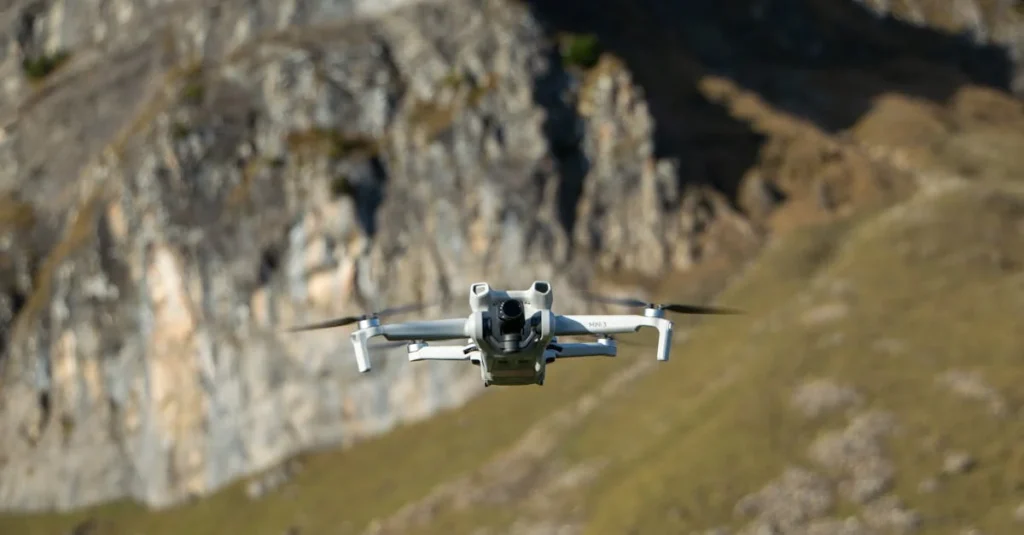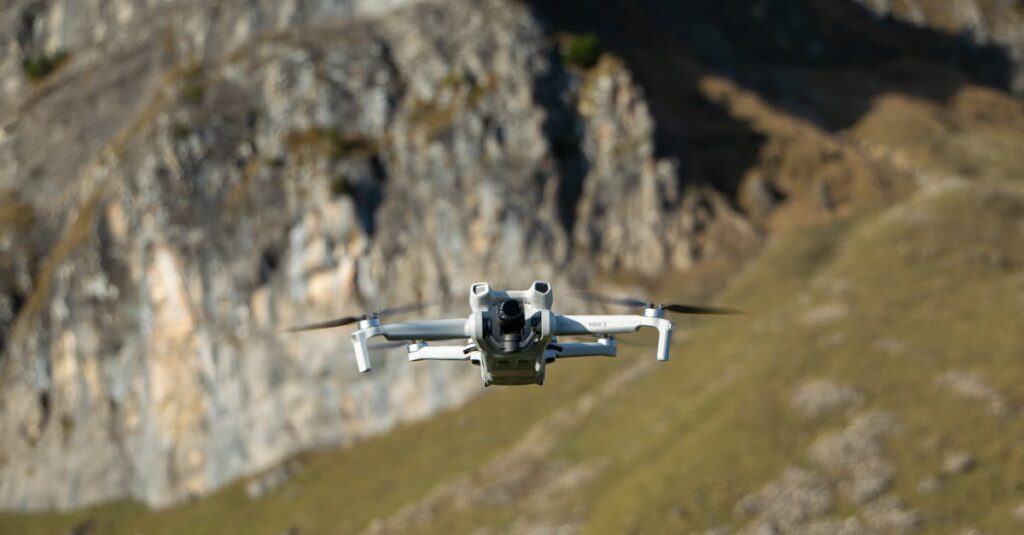Stanford Robotics stands at the forefront of innovation, merging cutting-edge technology with visionary research. As I delve into the world of Stanford’s robotics program, I’m struck by its commitment to pushing the boundaries of what’s possible. From autonomous vehicles to advanced AI-driven machines, Stanford’s contributions are reshaping industries and redefining how we interact with technology.
The university’s robotics program isn’t just about creating machines; it’s about fostering a collaborative environment where students and researchers can explore new frontiers. With a focus on interdisciplinary collaboration, Stanford brings together brilliant minds from computer science, engineering, and beyond. This synergy fuels groundbreaking projects that address real-world challenges and pave the way for future advancements.
In exploring Stanford Robotics, I’m excited to uncover the innovations and breakthroughs that continue to emerge from this hub of excellence. It’s a journey into a future where technology and human ingenuity blend seamlessly, promising endless possibilities.
Key Takeaways
- Pioneering Innovation: Stanford Robotics leads in merging advanced technology with visionary research, reshaping industries with breakthroughs in autonomous vehicles and AI-driven machines.
- Interdisciplinary Collaboration: The program emphasizes synergy among fields like computer science and engineering, fostering projects that tackle real-world challenges and drive future advancements.
- Research Diversity: Key areas of study include autonomous systems, human-robot interaction, and soft robotics, each contributing to technological innovation and improved human-machine communication.
- Groundbreaking Projects: Notable achievements include the Stanford Autonomous Helicopter and collaborations with industry giants, underscoring the program’s influence in both academic and industrial sectors.
- Exceptional Resources: Facilities like the Stanford Robotics Lab and CARS support groundbreaking research, offering students and researchers state-of-the-art tools for hands-on experimentation and learning.
- Strategic Partnerships: Stanford Robotics collaborates globally, enhancing its research and development capabilities by working with leading companies and academic institutions.
Stanford Robotics
Stanford Robotics stands at the forefront of technological advancement. Its program integrates research and education, providing a comprehensive approach to robotics. Faculty and students work together on pioneering projects in areas like artificial intelligence and machine learning, seeking innovative solutions to complex problems. The program’s research centers around human-robot interaction, autonomous systems, and bio-mechanics, ensuring diverse exploration in robotics.
Stanford’s commitment to interdisciplinary collaboration enhances its robotics program. Experts from fields such as engineering, computer science, and neuroscience collaborate to push boundaries. This approach leads to significant innovations, including the development of autonomous vehicles and robotic surgical systems. Stanford Robotics showcases its impact in both industry and academia through its extensive partnerships and collaborations.
Facilities at Stanford support groundbreaking research. The Stanford Robotics Lab and The Center for Automotive Research at Stanford (CARS) are equipped with state-of-the-art technology. These resources enable experimental studies and hands-on learning that prepare students for future challenges in robotics. By fostering a dynamic research environment, Stanford Robotics contributes significantly to the field, nurturing the next generation of innovators.
Research Areas In Stanford Robotics
Stanford Robotics explores diverse fields that push the boundaries of what’s possible. By investigating these areas, Stanford contributes to advancements that shape the future of technology.
Autonomous Systems
Autonomous systems play a crucial role in robotics research at Stanford. The focus is on developing algorithms and technologies enabling machines to operate independently. Researchers work on projects like self-driving cars and drones, collaborating across disciplines to improve navigation, perception, and decision-making skills in these systems. This research promises to revolutionize transportation and logistics.
Human-Robot Interaction
Human-robot interaction examines how humans and robots communicate and collaborate effectively. At Stanford, efforts concentrate on creating robots that understand human emotions and social cues. Innovative projects include designing interactive robots for elderly care and educational purposes. By enhancing communication between humans and machines, this research aims to create robots that better assist with daily tasks.
Soft Robotics
Soft robotics investigates the development of flexible robots made from materials mimicking natural organisms. Stanford researchers focus on designing robots that adapt to their environment with a high degree of dexterity. Applications range from medical devices that assist in minimally invasive surgeries to robots capable of navigating challenging terrains. This area emphasizes the integration of materials science and robotics to achieve advancements.
Notable Projects And Achievements
Stanford Robotics consistently delivers groundbreaking projects. One standout achievement is the development of the Stanford Autonomous Helicopter, which sets benchmarks in autonomous flight and navigation. Another remarkable project is the STAIR (STanford AI Robot), which integrates advanced AI to perform complex tasks such as object recognition and manipulation, enhancing domestic and industrial applications.
Collaborations with industry titans often result in impressive outcomes. The collaboration with Toyota resulted in the creation of the POMDPs software, which optimizes autonomous driving algorithms by modeling decision-making under uncertainty. Additionally, Stanford’s partnership with NASA led to the development of the Robotic Self-Assembly research, aimed at constructing modular spacecraft autonomously in orbit.
Stanford Robotics has earned recognition for its Bionic Research collaboration with Boston Dynamics, which focuses on developing biomimetic robots, inspired by animal locomotion, offering significant potential in search and rescue operations. The continued effort in advancing intelligent systems, underscored by these projects, highlights Stanford Robotics as a significant contributor to the robotics domain.
Facilities And Resources
Stanford Robotics boasts exceptional facilities that underpin its pioneering research and innovation. The Stanford Robotics Lab serves as a hub for interdisciplinary collaboration. It offers cutting-edge equipment, enabling researchers to prototype and test new robotics technologies effectively. Tools such as advanced 3D printers and robotic arms allow for the creation and manipulation of complex robotic components.
The Center for Automotive Research at Stanford (CARS) is pivotal in advancing autonomous vehicle technology. It provides a state-of-the-art testing ground where researchers develop and refine algorithms for self-driving cars. CARS facilitates partnerships with industry leaders, advancing the practical application of these technologies.
Supporting diverse research domains, the Stanford BioX Facility offers resources for bio-mechanics and soft robotics projects. The laboratory’s equipment includes imaging tools and simulation platforms, essential for developing robots that mimic biological systems.
In addition to these facilities, machine learning and artificial intelligence resources enhance Stanford Robotics’ capabilities. High-performance computing clusters and specialized AI software enable complex data analysis and algorithm development, crucial for autonomous systems and human-robot interaction research.
These facilities and resources foster an environment for groundbreaking discoveries, equipping students and researchers with the tools needed to lead in the robotics field.
Collaborations And Partnerships
Stanford Robotics leverages strategic alliances to drive innovation. Partnering with global industry leaders, it’s at the forefront of cutting-edge robotics advancements. Collaborations with Toyota enhance autonomous vehicle research, optimizing algorithms for self-driving technology. NASA partnerships tackle challenges in space exploration, focusing on robotic self-assembly techniques.
In academia, ties with leading institutions facilitate knowledge exchange. Joint research initiatives with MIT explore robotic interaction, furthering understanding of machine-human communication. Stanford’s relationship with Harvard bolsters developments in bio-inspired robotics, benefiting medical device innovation.
Corporations also play a crucial role. Working with Boston Dynamics, development of biomimetic robots progresses, targeting emergency search and rescue applications. These strategic partnerships demonstrate Stanford Robotics’ commitment to bridging the gap between academia and industry, continually pushing technological and scientific boundaries.
Future Directions In Stanford Robotics
Stanford Robotics is poised to spearhead revolutionary advancements in several promising areas. My focus includes enhancing autonomous systems, which means developing more efficient and adaptable algorithms. Researchers aim to create machines capable of self-learning and decision-making, advancing beyond current capabilities. There’s a strong emphasis on real-time data processing and adaptive mechanisms to improve machine responsiveness in unpredictable environments.
Robotics in healthcare is set to experience significant breakthroughs. I see researchers exploring surgical robots with enhanced precision and AI integration. This encompasses robots that can perform complex procedures with minimal human intervention. Another area under investigation is assistive robotics for personalized patient care, leveraging AI to adapt to individual needs and preferences.
Interdisciplinary collaboration remains a cornerstone of Stanford’s approach. Future research seeks to deepen this integration, blurring the lines between fields like neuroscience and robotics. By merging insights from diverse disciplines, the goal is to develop robots that not only mimic cognitive processes but also interact socially akin to humans.
Sustainability in robotics is another exploration direction. I anticipate efforts in designing energy-efficient robots to reduce environmental footprints. Focus includes developing biodegradable materials and improving energy conservation techniques. Researchers aim to introduce innovations that align with environmental goals, promoting sustainable technology.
In education, Stanford Robotics is committed to training the next generation of innovators and thinkers. Initiatives are underway to incorporate robotics into educational curricula at various levels, enhancing STEM learning through practical applications. Programs aim to foster creativity and problem-solving skills, essential for future roboticists.
Conclusion
Stanford Robotics stands at the forefront of technological advancement, driven by a collaborative spirit and cutting-edge research. Its role in pioneering innovations like autonomous vehicles and robotic surgical systems illustrates a profound impact on both industry and academia. By fostering strategic partnerships and interdisciplinary collaboration, Stanford Robotics continues to push the boundaries of what’s possible in the field. Looking to the future, the program is set to lead in areas like healthcare robotics and sustainable design, preparing to shape the next generation of innovators. With its commitment to excellence, Stanford Robotics remains a pivotal force in the evolution of intelligent systems.



